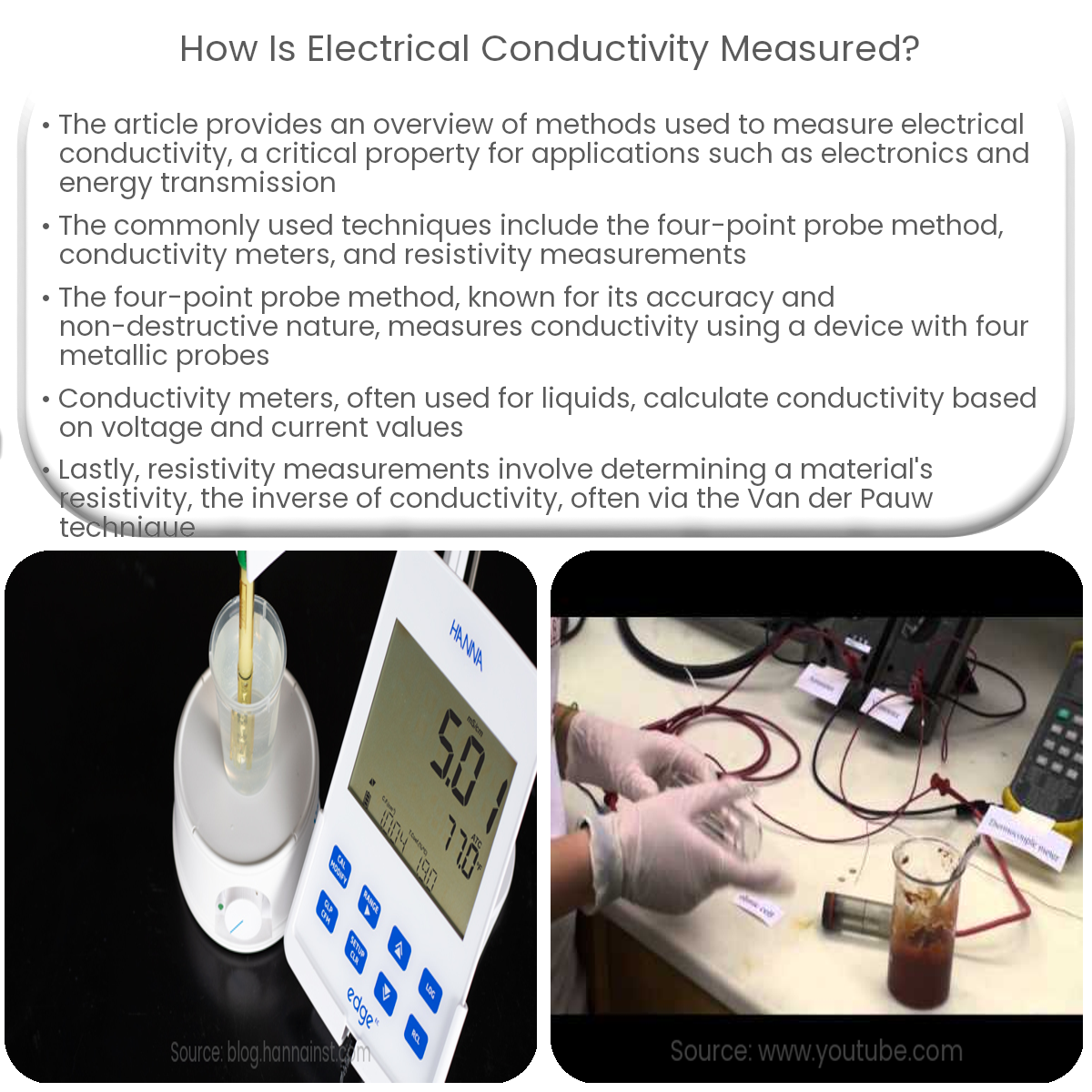Electrical conductivity is measured using methods like the four-point probe method, conductivity meters, and resistivity measurements.
Introduction
Electrical conductivity is a measure of a material’s ability to conduct electric current. It’s an essential property for various applications, such as electronics, energy transmission, and sensors. In this article, we will discuss the methods and tools used to measure electrical conductivity.
Methods of Measuring Electrical Conductivity
There are several methods to measure electrical conductivity, each with its advantages and limitations. The most common techniques include:
Four-Point Probe Method
The four-point probe method is a popular technique for measuring electrical conductivity. It involves the use of a device with four equally spaced, sharp metallic probes that are placed in contact with the material’s surface. A current is passed through the outer probes, and the voltage is measured across the inner probes. The material’s conductivity is then calculated using Ohm’s law and the geometric properties of the probe arrangement. This method is widely used due to its accuracy and non-destructive nature.
Conductivity Meters
Conductivity meters are commonly used to measure the electrical conductivity of liquids, such as water or electrolytes. These devices typically consist of a probe with two electrodes that are immersed in the liquid. An alternating current is applied to the electrodes, and the resulting voltage is measured. The device then calculates the conductivity based on the voltage and current values. Conductivity meters are useful for monitoring water quality and process control in various industries.
Resistivity Measurements
Electrical conductivity is the inverse of electrical resistivity. Therefore, measuring a material’s resistivity and calculating its inverse value can determine its conductivity. The most common method for measuring resistivity is the Van der Pauw technique. This method involves depositing four contacts on a thin, homogeneous sample material and measuring the resistance between the contacts using a current source and a voltmeter. The resistivity is then calculated from the resistance values and the sample geometry.
Conclusion
Measuring electrical conductivity is vital for understanding the properties of materials and their suitability for specific applications. The choice of method depends on the material type, sample size, and the desired level of accuracy. By selecting the appropriate technique, researchers and engineers can gain valuable insights into material performance and optimize their designs for safety and efficiency.


